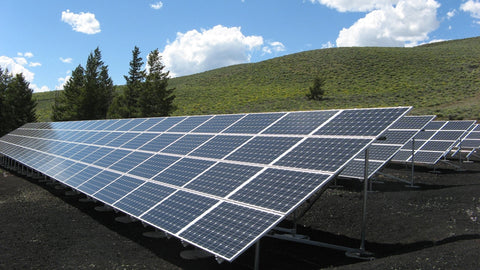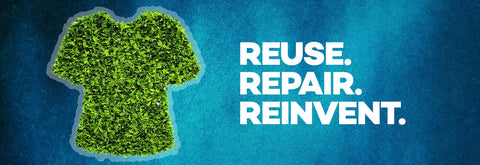
Unless you live under a rock, you will be familiar with the term “sustainable fashion.” Yes, it is that phrase that has caught the attention of all. From big brands to small designers, sustainable fashion has become a buzzword.
And why not? With the climate crisis at the helm, bringing attention to such corrective methods is necessary.
However, here comes the catch. Most of us talk about sustainable fashion without even comprehending the phrase completely. Well, don’t worry. We have got you covered. Keep reading and by the end of the article, you will know what sustainable fashion is, why it is the call of the hour and the different forms of it.
What is Sustainable Fashion?
When it comes to being sustainable in the fashion landscape, the approach becomes wide. What sustainability means for you might not have relevance for the next person. Keeping this in mind, sustainable fashion has two very different approaches from two very different perspectives. One is that from the POV of a brand and the other, customers.
Recommended Reading: What is Sustainable Fashion?
For the Brand
Sustainable fashion for brands includes everything from production to distribution. All stages of a product’s life cycle, be it manufacturing, production of raw materials, designing, transport, storage, marketing and even sale, all components are taken into consideration.

When each of these is considered keeping in mind socio-economic development and environmental welfare, a brand can truly identify itself as sustainable.
For brands, the primary concern remains to reduce carbon footprint and engage in mindful use of the resources.
For the Customers
From a customer’s point of view, sustainable fashion is understanding the power of your purchase. It is about being conscious and making mindful choices. This means taking into consideration factors such as materials used to craft the products, timeless designs, the process used by the brand to manufacture the products.
As customers, the frequency of your purchase also comes to play.
Wait, why do you ask?
Well, let’s just say that it what slow fashion is all about.
Putting sustainable fashion in comparison with fast fashion, the frequency of your purchase plays a big role.
Fast fashion was about creating trends rapidly, produce clothes that don’t last long, influencing customers to buy more and buy often.
Also Read: Impact of Fashion Industry on the Environment
Fast fashion has been highly debated over the last few years. Brands argued that to meet the rising demands, they shifted to more affordable and cheap production conditions.
But at what cost?
The environmentally and socially harmful practices of fast fashion have cost us this planet. Depleting natural resources, pollution of land and water, dead aquatic animals, affected farmers, degraded soil conditions, the list is long and surprisingly scary.
Our greed for more trends has pushed the planet towards destruction that might be irreversible.
So, what do we do?
This is where sustainable fashion comes to play. In contrast to fast fashion, this type of fashion talks about not only fixing the products by providing eco-friendly alternatives but highlights the need to address the root cause of the problem.

By changing the product distribution and marketing practices, a brand can contribute to a more sustainable pattern. When more and more clothing brands make a transition to a more efficient supply chain, the chances of making the world a better place becomes easier. By transforming their business models and directing their efforts to reduce overall environmental impacts, and improve social conditions, clothing brands can contribute to establishing sustainable fashion.
Bonus Read: Aligning with UN Sustainability Goals
As more customers are realizing the need for sustainable fashion, combined with increasing awareness, brands are taking this shift seriously.
The younger generation, especially the millennial and Gen Z have a serious approach to sustainable fashion, and this changing scenario can be perceived as something great for the environment.
Right Information for Right Decision

But to ensure that the efforts directed towards sustainable fashion are right, it is pivotal to be informed.
This is why it is so important to know more about the different forms of sustainable fashion. The way you adopt sustainable fashion can vary between any one of these. Or maybe all of these.
While some individuals advocate the necessity of eco-friendly clothes, others prefer vintage hand downs. Some believe in recycling the old pieces, others don’t mind renting or borrowing clothes.
Also Read: Why recycling products is necessary?
To advance the sustainable industry in the right direction, brands must promote more socially, ethically and environmentally production and consumption models. As for consumers, they must become informed and responsible.
Here is an infographic to help you understand the seven main forms of sustainable fashion.

The form you adopt depends on your individual preference. Not all forms will suit all people equally. But with an overview of the options available, it is easier to make a choice.
However, there are a few common trends when it comes to choosing these sustainable forms.
The younger crowd prefers to recycle their wardrobes frequently, opting for the fifth, sixth and seventh options. Whereas, some people consistently prefer to buy new clothes, making the first and third options ideal for them.
Recommended Reading: Can a Sustainable lifestyle prevent Climate Change?
To Conclude
No matter the choice, aligning yourself with at least one of these forms can ensure a better future for the environment.

Look for brands that are green, clean, fair and ethical. We at NorthMist have a simple philosophy- to be thoughtful, responsible and sustainable. Each of our t-shirts is crafted keeping in mind social, economic and environmental factors. Nurtured with care and grown using 100% organic cotton, our brand is the epitome of being eco-friendly.
Check out our sustainable t-shirt collection. To stay updated on the latest sustainability news, visit our blog today.





